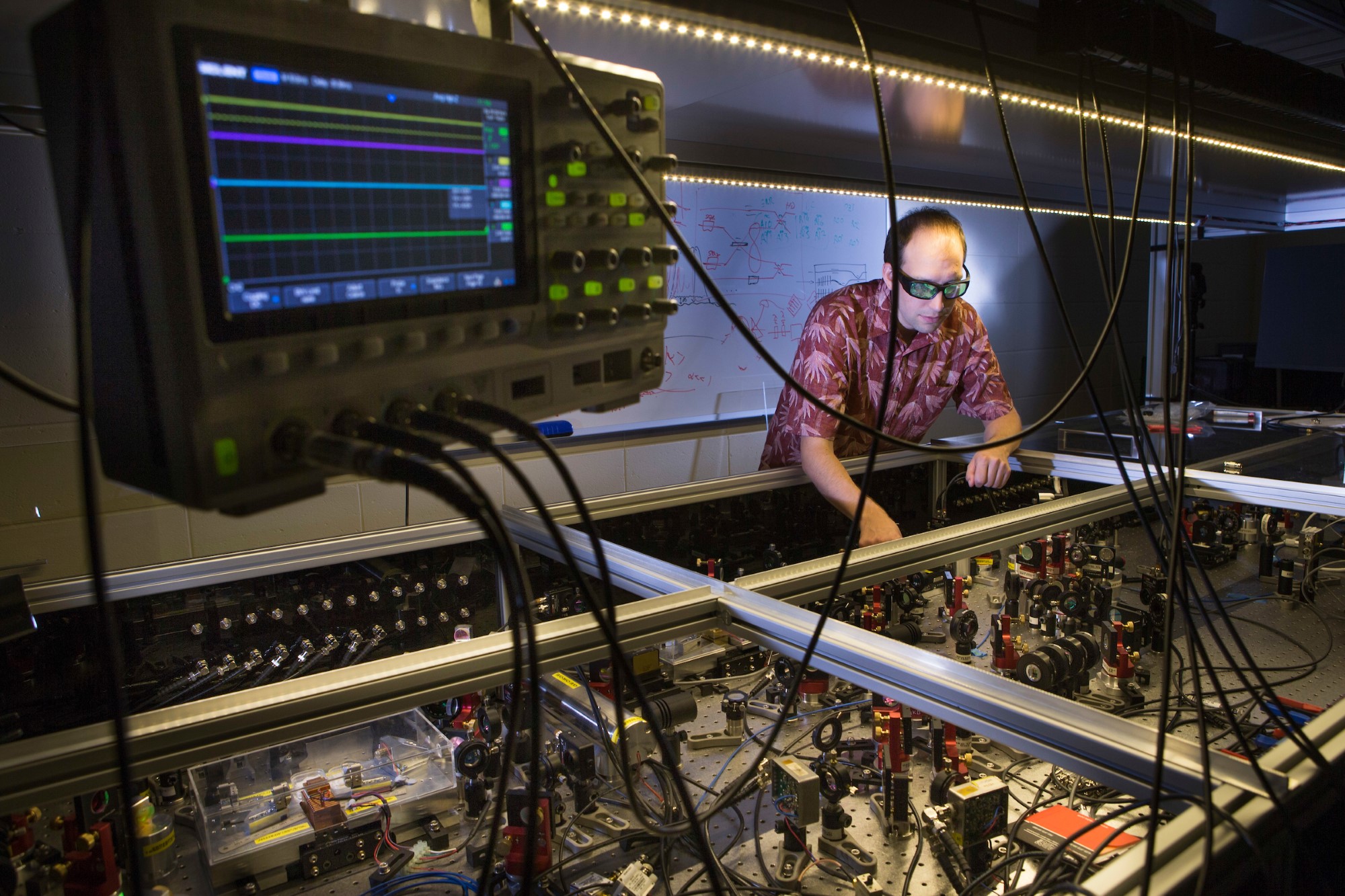
Research projects
Discover the forefront of astronomy and astrophysics through our projects, ranging from deep-space communication systems to groundbreaking adaptive optics. Explore our diverse, ongoing research initiatives shaping the future of space science.
Displaying 106 - 120 of 122 project(s).
The ISM of spiral galaxies is a dynamic environment consisting of thermal gas, relativistic particles, magnetic fields, and dust. The project aims to decipher the origin of filamentary structures in the ISM using numerical simulations as well as observational data.
Theme
- Structure and evolution of the Cosmos
This project will simulate observations of the rotation measure (RM) at high Galactic latitude that traces the magnetic structures of the Milky Way. The goal is to pinpoint the cause of the recently discovered asymmetry in the RM patterns between the two Galactic hemispheres.
Theme
- Galactic archaeology
- Structure and evolution of the Cosmos
Student intake
Open for Bachelor, Honours students
People
- Professor Naomi McClure-Griffiths, Supervisor
This project will simulate observations of the rotation measure (RM) at high Galactic latitude that traces the magnetic structures of the Milky Way. The goal is to pinpoint the cause of the recently discovered asymmetry in the RM patterns between the two Galactic hemispheres.
Theme
- Galactic archaeology
- Structure and evolution of the Cosmos
Student intake
Open for Bachelor, Honours students
People
- Professor Naomi McClure-Griffiths, Supervisor
In this project, you will lead development of a key sub system (optical, mechanical, computational) to enable novel ultra-high resolution, visible light instrument Pyxis: a prototype for an astrophysical space interferometer.
Theme
- Instrumentation
- Stellar and planetary astronomy
Student intake
Open for Bachelor, Honours, PhD students
People
- Associate Professor Tony Travouillon, Supervisor
- Professor Michael Ireland, Supervisor
In this project, you will lead development of a key sub system (optical, mechanical, computational) to enable novel ultra-high resolution, visible light instrument Pyxis: a prototype for an astrophysical space interferometer.
Theme
- Instrumentation
- Stellar and planetary astronomy
Student intake
Open for Bachelor, Honours, PhD students
People
- Associate Professor Tony Travouillon, Supervisor
- Professor Michael Ireland, Supervisor
Supermassive black holes in the early Universe are more massive than we can presently explain. We aim to construct their demographics and reveal their origin.
Theme
- Black hole phenomena
- Structure and evolution of the Cosmos
Student intake
Open for Honours, PhD students
Observatory
People
- Associate Professor Christian Wolf, Supervisor
Blue stragglers are main-sequence stars that are more luminous and bluer than stars of the same age, and their existence has long defied standard stellar evolution.
Theme
- Galactic archaeology
- Stellar and planetary astronomy
Student intake
Open for Bachelor, Honours students
People
- Associate Professor Luca Casagrande, Supervisor
The student will model the gamma-ray emission around the Milky Way's central bubble.
Theme
- Galactic archaeology
In this project, the idea would be to combine the publicly available GALAH and APOGEE spectra and analyse them together: We should be able to measure up to 40 different elements from hundreds of lines and provide the community with reference values.
Theme
- Galactic archaeology
- Stellar and planetary astronomy
By conducting this comprehensive study, we will gain valuable insights into the distinctive properties of the HI gas in the Magellanic Stream. This will allow us to compare the properties of HI gas in the Magellanic Stream with those in the Magellanic Clouds and the Milky Way, shedding light on the differences between.
Theme
- Structure and evolution of the Cosmos
The goal of this project is to use new, high-resolution simulations to understand how key physical processes, like stellar feedback and gravitational instabilities, shape disk galaxies (from 11 Gyr ago to today).
Theme
- Structure and evolution of the Cosmos
Student intake
Open for Honours, Master, PhD students
Observatory
People
- Associate Professor Emily Wisnioski, Collaborator
Stellar spectra capture the light of a star across multiple wavelengths and include absorption features of numerous atoms and molecules from a star’s photosphere. The abundance data many stars then allow us to study the chemical evolution across large scales in our Galaxy and decipher Galactic trends.
Theme
- Galactic archaeology
- Stellar and planetary astronomy
In this project you will use a new cosmic ray propagation code, CRIPTIC, to model the injection, transport, and final annihilation of positrons in the interstellar medium of the inner Galaxy.
Theme
- Black hole phenomena
- Galactic archaeology
- Structure and evolution of the Cosmos
Student intake
Open for Honours, PhD students
People
- Dr Roland Crocker, Supervisor
- Professor Mark Krumholz, Supervisor
In this project you will use a new cosmic ray propagation code, CRIPTIC, to model the injection, transport, and final annihilation of positrons in the interstellar medium of the inner Galaxy.
Theme
- Black hole phenomena
- Galactic archaeology
- Structure and evolution of the Cosmos
Student intake
Open for Honours, PhD students
People
- Dr Roland Crocker, Supervisor
- Professor Mark Krumholz, Supervisor
We aim to build a novel framework to study supermassive black holes via their unique gravitational wave signatures providing a multi-messenger tool to constrain galaxy formation in the early universe.
Theme
- Black hole phenomena
- Structure and evolution of the Cosmos
